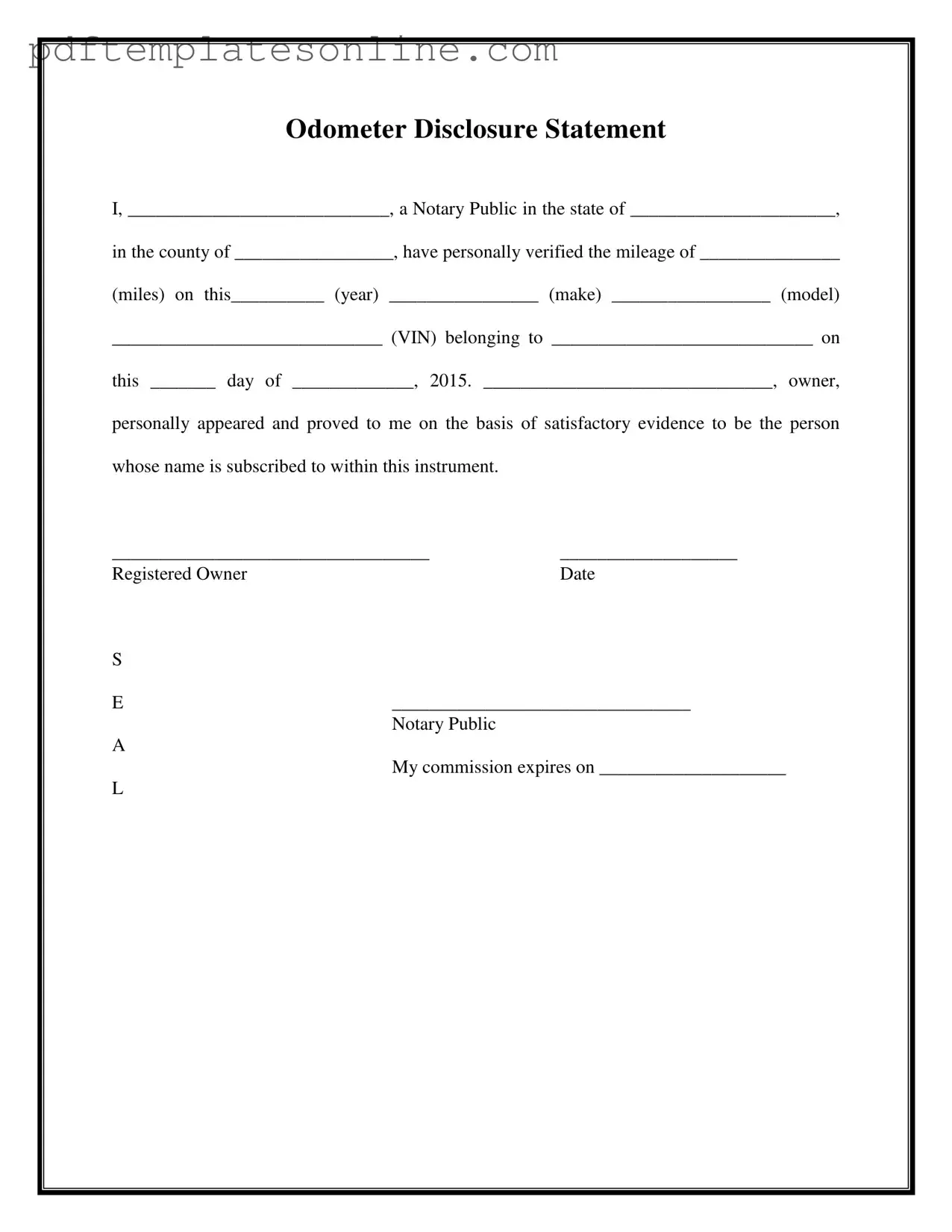Filling out the Notarized Odometer Statement form can seem straightforward, but many people make common mistakes that can lead to complications. One significant error is failing to provide complete information. Each blank space must be filled out accurately, including the vehicle's make, model, and VIN. Omitting any detail can render the document invalid.
Another frequent mistake is incorrect mileage reporting. When stating the mileage, it is crucial to ensure that the number accurately reflects the vehicle's current reading. Misreporting mileage, whether intentional or accidental, can lead to legal repercussions and disputes down the line.
People often overlook the importance of the notary's signature and seal. The form requires a notary public to verify the document. If the notary fails to sign or seal the statement, it may not hold up in legal situations. Always double-check that the notary has completed this step before considering the form finalized.
Additionally, some individuals neglect to include the date of the notarization. This date is essential, as it indicates when the verification took place. Without it, the document may be questioned regarding its validity and timing.
Another common error is using an outdated version of the form. Laws and requirements can change, so it is vital to ensure that the latest version of the Notarized Odometer Statement is being used. Using an obsolete form could lead to issues with compliance.
Inconsistencies in names can also pose a problem. The name of the vehicle owner must match the name on the title and other legal documents. Any discrepancies can lead to confusion and potential legal challenges.
Some people forget to check the state requirements for notarization. Each state has its own rules regarding notary practices, and failing to adhere to these can invalidate the document. It is advisable to familiarize oneself with local regulations before proceeding.
Moreover, many individuals fail to provide satisfactory evidence of identity to the notary. The notary must verify the identity of the signatory, and if proper identification is not presented, the notarization cannot be completed.
Lastly, neglecting to keep a copy of the completed form can be a costly mistake. Retaining a copy serves as proof of the odometer disclosure and can be essential in case of future disputes. Always ensure that a copy is stored safely for personal records.
